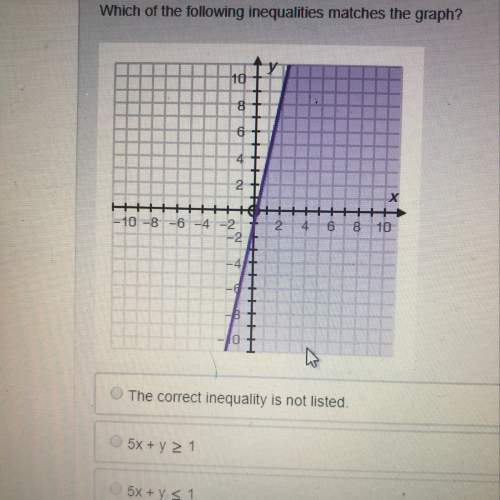
Mathematics, 05.05.2020 11:40 squawk1738
After the third month of a 12 month loan,
the numerator is: {(n + ) + (n + ) + (n + )} =
, and
the denominator is: {(n) + (n + 1) + ... + (n + )} =
Therefore, the fraction is numerator/denominator (to the nearest tenth) =
The Rule of 78 tells us to write a sequence using the numerical equivalents for the months of the year. In set notation we would write {1, 2, 3, , 12}. We could also use algebraic notation and write {n, n + 1, ..., n + 11} where n = 1. Clearly this sequence has a beginning and an end so it is finite.
Next, the Rule of 78 tells us to write a series. A series is a summation of quantities based upon a sequence. In this instance if we add the all the individual terms specified by {n, n + 1, ..., n + 11}, the sum is 78. Thus, the name is the rule of 78.

Answers: 2
Another question on Mathematics

Mathematics, 21.06.2019 14:40
Which graph represents the following piecewise defined function?
Answers: 2

Mathematics, 21.06.2019 16:30
Diana is painting statues she has 7/8 of a liter of paint each statue requires 1/20 of a liter of paint how many statues can she paint?
Answers: 3

Mathematics, 21.06.2019 21:30
Ok a point t on a segment with endpoints d(1, 4) and f(7, 1) partitions the segment in a 2: 1 ratio. find t. you must show all work to receive credit.
Answers: 1

You know the right answer?
After the third month of a 12 month loan,
the numerator is: {(n + ) + (n + ) + (n + )} =...
the numerator is: {(n + ) + (n + ) + (n + )} =...
Questions


Geography, 09.02.2021 04:10

Mathematics, 09.02.2021 04:10

Mathematics, 09.02.2021 04:10




Physics, 09.02.2021 04:10

Physics, 09.02.2021 04:10


Mathematics, 09.02.2021 04:10


Social Studies, 09.02.2021 04:10


Computers and Technology, 09.02.2021 04:10


Social Studies, 09.02.2021 04:10


Mathematics, 09.02.2021 04:10

History, 09.02.2021 04:10




